
MDC's Bundled Engineered Solutions
MDC offers virtually every component required for vacuum coating applications. With MDC's standard chamber line you have the advantage of bundling these high quality pieces together without hours or weeks of special engineering. More...
MDC
engineered process solutions
www.mdcvacuum.com
|

From AR Coatings to Notch Filters, and from TCOs to DBRs, Evatec offers customized coating platforms and complete process solutions based on enhanced evaporation and sputter.
Phone: (603) 669-9656
www.evatecnet.com
E-Mail:infoNA@evatecnet.com
|
 
Large Throttle Valves
Throttle Valves with ports as large as 630 mm, ISO-630 or ANSI 24 inch. Also any flange style as small as NW-25. Aluminum, steel or stainless steel.
Phone: 800-426-9340
Web: vacuumresearch.com
|
 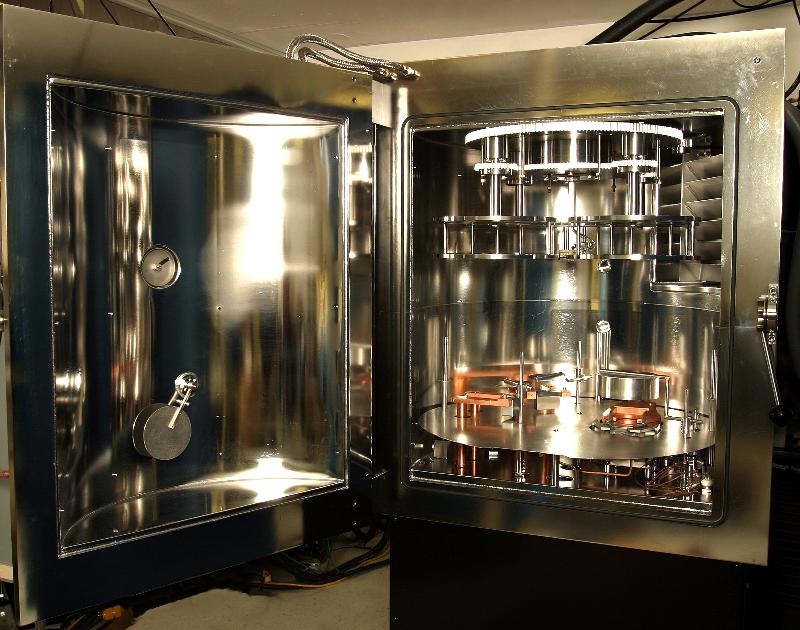
Dynavac produces a wide range of thin film deposition systems that include electron beam, thermal evaporation, sputtering and ion-assist. Our reputation is built upon quality, reliability, and excellent customer relations.
Telephone: 781-740-8600 |

 Speed pump-down and vacuum performance with RediVac™ Fasteners and Seals from UC Components Inc. Speed pump-down and vacuum performance with RediVac™ Fasteners and Seals from UC Components Inc. |
 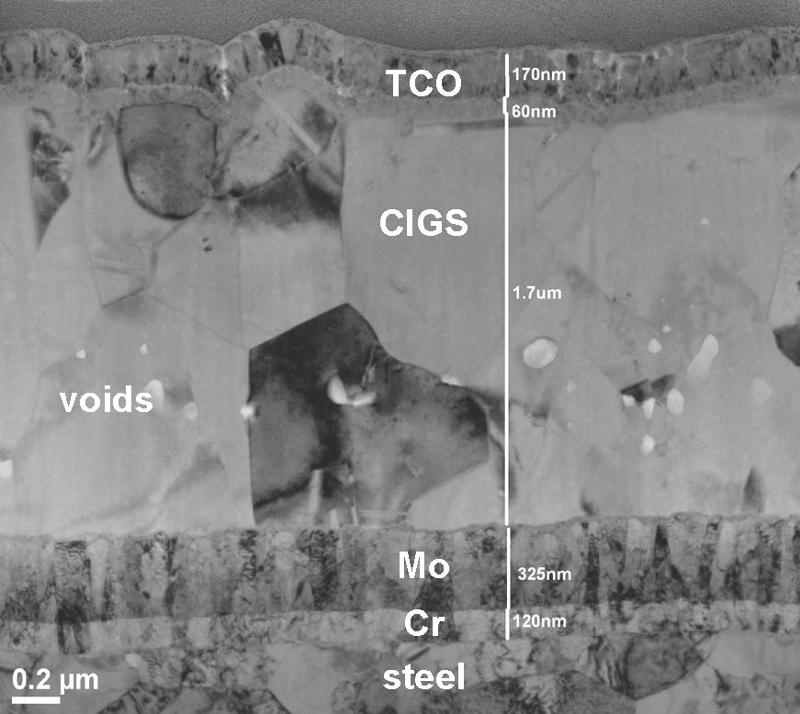
Evans Analytical Group (EAG) is the leading global provider of high quality surface analysis and materials characterization services to the films and coatings industry.
Evans Analytical Group
1.800.366.3867
|
 
Solid Sealing Technology designs and manufactures hermetic assemblies using metalizing, brazing and glass-ceramic sealing including standard and custom Feedthroughs/Connectors for extreme environments and UHV.
Contact:
Ph: 518-874-3600
Fax: 518-874-3610
info@solidsealing.com
|
 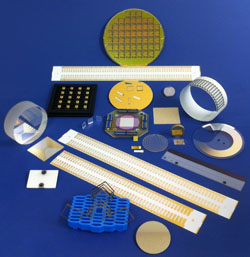
Thin-Films Research is prepared to meet your custom thin-film coating requirements. Using state-of-the-art equipment and over 40 years of experience, Thin-Films Research offers technology for the electro-optics, semiconductors, sensors & medical electronic industries. Learn More
Thin-Films Research, Inc.
270 Littleton Road
Westford, MA 01886
Phone: 978-692-9530
Fax: 978-692-9531
E-Mail: sales@thinfilmsresearch.com |

Intelligent RGA
The PrismaPlus™ mass spectrometer delivers qualitative and quantitative gas analysis and leak detection. It provides precise and stable results to 300 amu with a detection limit of 1x10-14 mbar. Learn More.
Pfeiffer Vacuum, Inc.
24 Trafalgar Square
Nashua, NH 03063-1988
Phone: 603-578-6500
www.pfeiffer-vacuum.com
prismaplus@pfeiffer-vacuum.com
|
 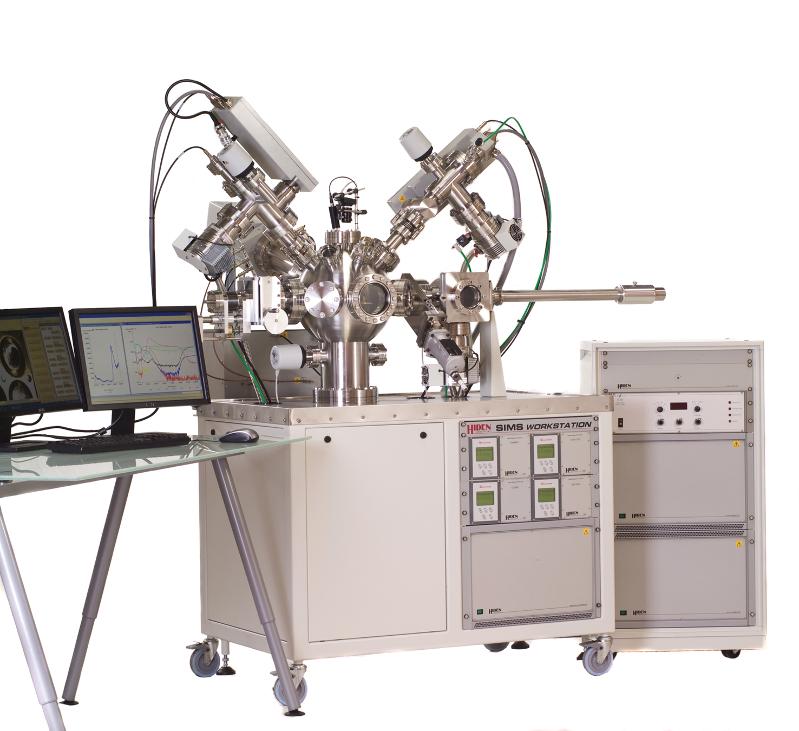
SIMS Workstation
A high performance SIMS instrument for:
- Thin film depth profiling
- Surface imaging
- Features new high sensitivity sputtered neutrals detection mode for quantitative analysis.
Learn more.
E-mail address: info@hiden.co.uk
Phone: +44 [0] 1925 445225 (UK)
or [1] 734 542 6666 (USA)
Website: www.HidenAnalytical.com
|
 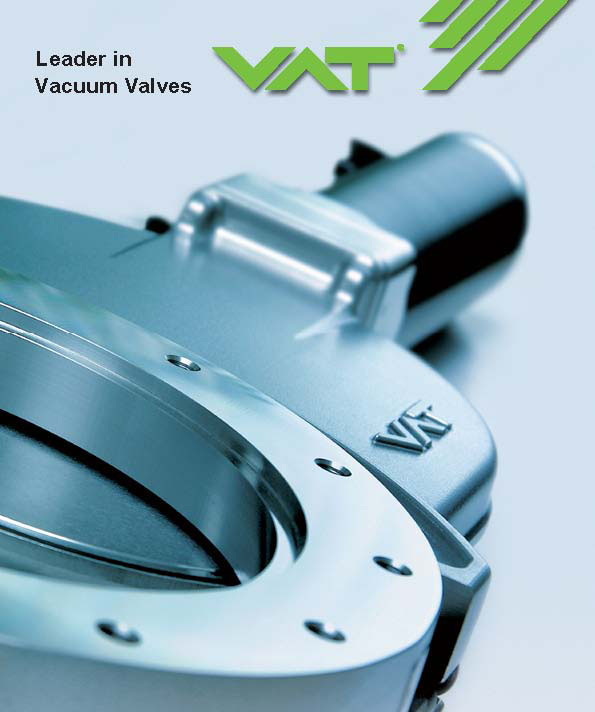
VAT manufactures high quality vacuum valves for a variety of applications. Products include: gate, angle, fast-closing, transfer, pendulum, throttle, pressure control, all-metal and customized valves. Learn more.
Contact Us:
Phone: 781-935-1446
or 800-935-1446
E-Mail: US@vatvalve.com
|
 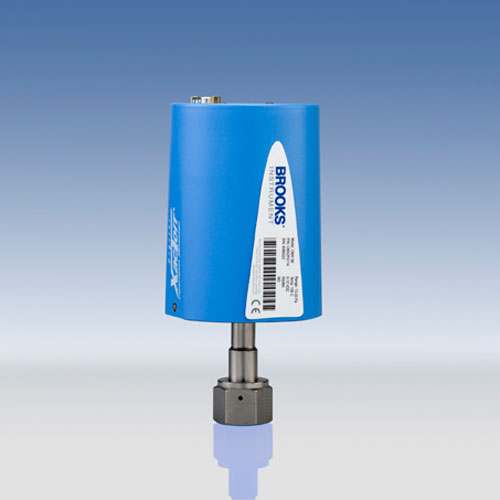
Capacitance Manometers that Last
...Up to 3x Longer
The rugged design of the Brooks XacTorr handles byproduct build-up, lasting up to three times longer even in aggressive processes. Learn more.
Brooks Instrument
Phone: 215.362.3700
Email:
BrooksAM@BrooksInstrument.com
|

Dual Stage Rotary Vane Pumps
The VD Series dual stage, oil rotary vacuum pumps are available in pumping speeds from 600 - 800 l/min. They're lightweight and feature low noise with minimal vibration levels.
Learn More.
|
 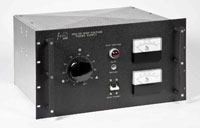
Glow Discharge Power Supplies The YTI GDS Series of 2 kW Glow Discharge Power Supplies output is available with variac or manual control and remote On/Off. Safety interlocks for door and vacuum protect the operator and hardware. Learn More. YTI Thin Film Products and Services Phone: 860.429.1908 Ebeamsource@ytionline.com www.ytionline.com |
 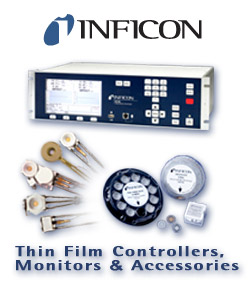
INFICON thin film deposition controllers, monitors and accessories, including customizable sensors and feedthroughs, offer features, function and value targeted to your application. View our catalog and contact us today! |
 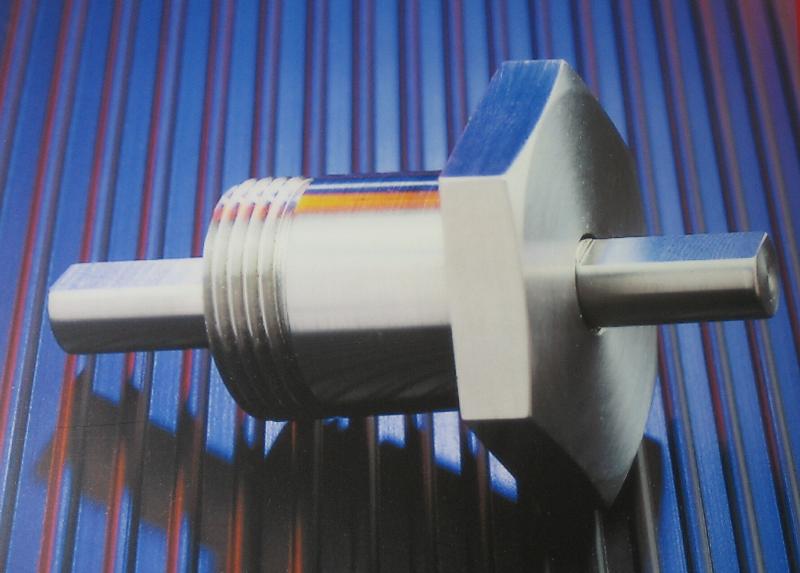
Reliable, Low Cost Rotary Motion Feedthroughs
Rigaku solid-shaft Superseal rotary motion feedthroughs are the ultimate value, rotary sealing solution. They are the lowest cost feedthroughs while being recognized for their quality and performance. Learn More.
Rigaku Vacuum Products
E-mail: vacuum-info@rigaku.com
Phone: 603-890-6001
|

Got a Handle on Destructive Arching? Comdel Can Help.
Comdel's VF Series Multiple Channel Synthesizers provide phase adjustable output to avoid destructive arcing and cross-talk in multiple cathode plasma processing chambers, and allows adjustment for cable length dependencies. Learn more.
Comdel
11 Kondelin Road
Gloucester, MA 01930
Tel: 978-282-0620 or 800-468-3144
Fax: 978-282-4980
www.comdel.com
info@comdel.com
|

Happening Now!
April 28 - May 3, 2012
Santa Clara, California
Log in and see what's happening NOW at the TechCon!
Exhibit
Education
Networking
Connect to TechCon MOBILE!
|
|
|

|
|
Researchers Discover a New Path for Light Through Metal
|
From Photonics Online, March 27, 2012, Source - Optical Materials Express, Vol. 2, Issue 4, pp. 478-489 (2012), Titanium nitride as a plasmonic material for visible and near-infrared wavelengths, by Gururaj V. Naik, Jeremy L. Schroeder, Xingjie Ni, Alexander V. Kildishev, Timothy D. Sands, and Alexandra Boltasseva
http://dx.doi.org/10.1364/OME.2.000478, :
"Helping bridge the gap between photonics and electronics, researchers from Purdue University have coaxed a thin film of titanium nitride into transporting plasmons, tiny electron excitations coupled to light that can direct and manipulate optical signals on the nanoscale. Titanium nitride's addition to the short list of surface-plasmon-supporting materials, formerly comprised only of metals, could point the way to a new class of optoelectronic devices with unprecedented speed and efficiency.
'We have found that titanium nitride is a promising candidate for an  entirely new class of technologies based on plasmonics and metamaterials," said Alexandra Boltasseva, a researcher at Purdue and an author on a paper published today in the Optical Society's (OSA) open-access journal Optical Materials Express. "This is particularly compelling because surface plasmons resolve a basic mismatch between wavelength-scale optical devices and the much smaller components of integrated electronic circuits.'" entirely new class of technologies based on plasmonics and metamaterials," said Alexandra Boltasseva, a researcher at Purdue and an author on a paper published today in the Optical Society's (OSA) open-access journal Optical Materials Express. "This is particularly compelling because surface plasmons resolve a basic mismatch between wavelength-scale optical devices and the much smaller components of integrated electronic circuits.'"
Link to paper in OSA's Optical Materials Express: http://www.opticsinfobase.org/ome/abstract.cfm?uri=ome-2-4-478
Source: Read the full article...
Photonics Online: http://www.photonicsonline.com/doc.mvc/Researchers-Discover-A-New-Path-For-Light-0001?sectionCode=News&templateCode=EnhancedStandard&user=2506668&source=nl:33583
Image: Alexandra Boltasseva, Purdue University/Optical Materials Express.
|
|
Graphene's New Rival
|
From IEEE Spectrum, April 2012, by Neil Savage: "Graphene has become the darling of the postsilicon crowd in the eight years since Andre Geim and Konstantin Novoselov isolated it by ripping Scotch tape off a chunk of graphite. But there are other two-dimensional nanowonders. Molybdenum disulfide (MoS2), which can be pulled off a block of molybdenite through the same process, could offer new approaches to making high-speed logic circuits-on its own or in combination with graphene.
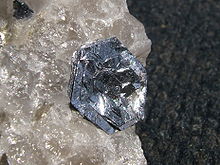
"We spent the last seven, eight years looking at how to make transistors out of graphene," Geim says. "But there was an elephant in the room-that you can't really switch off current in graphene."
Graphene's single atomic layer of carbon atoms allows electricity to flow rapidly, promising circuits that work far faster than silicon transistors. But it lacks a bandgap, meaning that it's hard to shut off the flow, making the on and off states of digital logic nearly impossible. Several approaches-using nanoribbons, quantum dots, or double layers of graphene-have been tried, but they are difficult, poorly developed, and tend to undermine the speed advantage."
Source: Read the full article...
IEEE Spectrum: http://spectrum.ieee.org/semiconductors/nanotechnology/graphenes-new-rival
Image: Wikipedia
|
|
Wafer-Scale Graphene Grown at Lower Temp with Cu Film
|
From Solid State Technology, March 19, 2012: "University of Texas at Austin researchers demonstrated high-quality, wafer-scale graphene deposition on evaporated copper films, using an AIXTRON cold-wall vertical BM (Black Magic) Pro reactor. The BM Pro is a high-performance, flexible chemical vapor deposition (CVD) processing platform with high uniformity. Also read: AIXTRON deposition tools installed at graphene research lab in Italy Using a lower processing temperature than that needed for graphene synthesis on copper foil, the researchers deposited monolayer graphene chemical with negligible defects onto evaporated copper films on the wafer-scale.
"A pre-annealing process is used at first to create a hydrogen-rich polycrystalline copper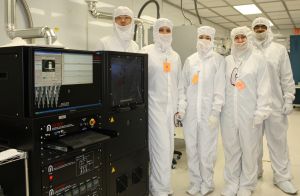 film of <111> preferential orientation, followed by the decomposition of pure methane for the growth of high quality graphene. The growth proceeds without the need for hydrogen gas during the growth phase, and occurs at a lower processing temperature than on copper foil," said Prof. Deji Akinwande, who led this research together with Prof. Rod Ruoff's team at the Microelectronics Research Center at UT Austin." film of <111> preferential orientation, followed by the decomposition of pure methane for the growth of high quality graphene. The growth proceeds without the need for hydrogen gas during the growth phase, and occurs at a lower processing temperature than on copper foil," said Prof. Deji Akinwande, who led this research together with Prof. Rod Ruoff's team at the Microelectronics Research Center at UT Austin."
Source: Read the full article...
|
|
2011 Clean Energy Patents at New High
|
From RenewableEnergyWorld.com, April 5, 2012, by Victor Cardona: " Clean Energy Patents hit a record high in 2011, up 450 patents relative to 2010 according to the Clean Energy Patent Growth Index. GE took the yearly Clean Energy Patent Crown from GM in 2011 while also leading the Wind and Solar sectors and making the annual top ten in hybrid/electric vehicles. U.S. patent owners hold more U.S. patents than any other country. Also, solar and wind patents continued their rise to pull away from the lower tier of CEPGI sectors while fuel cells continued to lead."
"The CEPGI tracks the granting of patents in the Clean Energy sector and monitors important technological breakthroughs in this field."
Source: Read the full article...
|
|
European Partnership for Next Generation of Stacked Solar Cells
|
From Forschungszentrum Jülich (Germany), March 30, 2012: "Eighteen leading industrial and research partners have joined forces in an EU Fast Track project aiming to further refine this technology. In the next three years, it is planned to produce a marketable prototype with an efficiency of twelve percent. The project is coordinated by Forschungszentrum Jülich and funded to the tune of € 9.3 million by the EU." 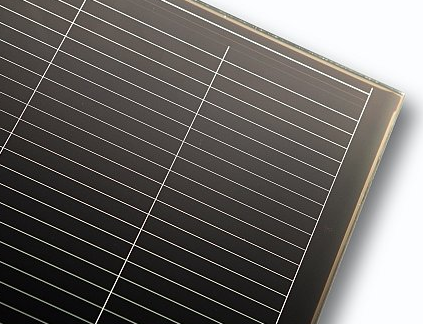 "In the Fast Track project, leading representatives from research and industry who previously pursued different technologies are now pooling their expertise in order to combine the best components. By harmonizing and optimizing different approaches, a new generation of thin-film silicon solar modules will be created with an efficiency of twelve percent. This corresponds to an increase of twenty percent and under test conditions the costs should amount to less than € 0.5 per watt nominal power."
Source: Read the full article...
|
|
A Full-Color, Low-Power, Wearable Display for Mobile Applications
|
From SPIE Newsroom, March 29, 2012, by Huiqing Pang et al.: "Display technology has advanced rapidly with the increasing demands of consumer electronics. One of the future trends is to realize flexible displays, which are highly desired for mobile applications in a lightweight, non-breakable, and ultimately rollable form factor."
A team of scientists at Universal Display Corporation (UDC) have created "a wrist unit prototype using a 4.3" HVGA (half-size video graphics array) 134-dpi full-color flexible phosphorescent OLED (PHOLED) display. This prototype is designed to fit over the user's wrist, enabling the wearer to see real-time video and graphics information. The displays use a-Si backplanes fabricated on stainless steel substrates, with a total thickness of less than 0.3mm."  One of the challenges "facing flexible AMOLED displays is the development of an encapsulation technology. OLEDs degrade when exposed to atmospheric oxygen and water. Rigid glass displays are typically sealed in an inert atmosphere using a glass or metal lid. For flexible displays, however, flexible, thin-film encapsulation is required. We have reported a low-stress, transparent, single-layer permeation barrier using single-chamber plasma-enhanced chemical vapor deposition. Under accelerated storage tests at 85°C and 85% relative humidity, the active area of the encapsulated device remains 100% after 500 hours. This shows great promise for achieving a high-quality, simplified thin-film encapsulation for flexible displays." One of the challenges "facing flexible AMOLED displays is the development of an encapsulation technology. OLEDs degrade when exposed to atmospheric oxygen and water. Rigid glass displays are typically sealed in an inert atmosphere using a glass or metal lid. For flexible displays, however, flexible, thin-film encapsulation is required. We have reported a low-stress, transparent, single-layer permeation barrier using single-chamber plasma-enhanced chemical vapor deposition. Under accelerated storage tests at 85°C and 85% relative humidity, the active area of the encapsulated device remains 100% after 500 hours. This shows great promise for achieving a high-quality, simplified thin-film encapsulation for flexible displays."
Source: Read the full article: SPIE Newsroom: http://spie.org/x86720.xml?highlight=x2408&ArticleID=x86720
Image: Universal Display Corporation
|
|
Natcore Scientists Create "Absolute Black"
|
From Nanowerk News, March 29, 2012: "Scientists at Natcore Technology Inc., using simple liquid bath processes, have created a black surface on a silicon wafer with an average reflectance in the visible and near-infrared region of the solar spectrum of 0.3%, making it the "blackest" silicon solar cell surface ever recorded. Compared with standard production cells now available, this represents a tenfold reduction in reflectance over that portion of the spectrum, which is the source of about 80% of the usable power that can be drawn from sunlight.
The black color of black silicon results from the near-total absence of reflected light from the porous wafer surface. With solar cells, "blackness" is highly desirable because it indicates that incident light is being absorbed for conversion to energy rather than being reflected and thus wasted."
"But there are additional benefits to be derived from black silicon. A panel made from black silicon solar cells will produce significantly more energy on a daily basis than will a panel made from cells using the industry standard antireflective coating. First, because it reflects less light. Second, because it performs better during the morning and afternoon hours when the sun hits at an angle."
Source: Read the full article...
Nanowerk News: http://www.nanowerk.com/news/newsid=24768.php
|
|
Triple-Protected Nanoparticles
| From Chemical and Engineering News, by Mich Jacoby:
"Applying a uniform oxide coating to metal nanoparticles used for catalytic hydrocarbon processing simultaneously protects the particles from three common deactivation processes that can lead to frequent chemical reactor shutdowns, according to a study conducted by researchers at Northwestern University and Argonne National Laboratory.
A number of chemical and physical processes can rob nanosized metal 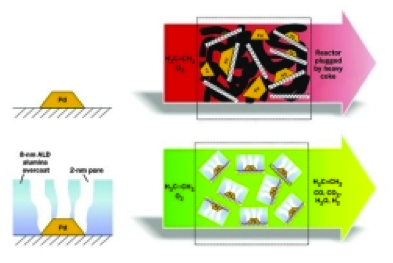 catalyst particles of their ability to mediate chemical reactions. In hydrocarbon catalysis, the two most common routes to deactivation for such particles are sintering and accumulation of coke. Nanoparticle catalysts are also often ruined by forces that leach the particles from their supports. catalyst particles of their ability to mediate chemical reactions. In hydrocarbon catalysis, the two most common routes to deactivation for such particles are sintering and accumulation of coke. Nanoparticle catalysts are also often ruined by forces that leach the particles from their supports.
Peter C. Stair, a Northwestern chemistry professor, reported that oxide coatings made via atomic layer deposition (ALD) can indeed provide that type of catalyst protection."
Source: Read the full article...
|
|
Making Ottawa the World's Photonics Center
|
From Photonics Spectra, April 2012, by Melinda A. Rose: "A $55 million photonics center that was expected to break ground on the University of Ottawa campus in March will help fulfill the school's goal to make Ottawa the global hub of photonics.
The five-story Centre for Advanced Photonics and Environmental Analysis (CAPEA) will house specialized labs and equipment and will attract the world's outstanding researchers in the fields, said university President Allan Rock. The center will also house Canada's only accelerator mass spectrometer for conducting research in photonics and environmental analysis.
On May 2010, $10 million in government funding allowed the university to recruit quantum optics and photonics pioneer Robert W. Boyd as its inaugural Canada Excellence Research Chair in Quantum Nonlinear Optics. Boyd was wooed from the University of Rochester, where he had worked for more than 30 years."
Source: Read the full article...
Photonics Spectra: http://www.photonics.com/Article.aspx?AID=50514
|
|
New Boundaries for Controlling Band Gaps
|
From Oak Ridge National Laboratory, Feb 21, 2012, : "Solar cells, light emitting diodes, displays and other electronic devices could get a bump in performance because of a discovery at the Department of Energy's Oak Ridge National Laboratory that establishes new boundaries for controlling band gaps. 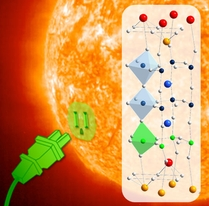 While complex transition metal oxides have for years held great promise for a variety of information and energy applications, the challenge has been to devise a method to reduce band gaps of those insulators without compromising the material's useful physical properties. While complex transition metal oxides have for years held great promise for a variety of information and energy applications, the challenge has been to devise a method to reduce band gaps of those insulators without compromising the material's useful physical properties.
The band gap is a major factor in determining electrical conductivity in a material and directly determines the upper wavelength limit of light absorption. Thus, achieving wide band gap tunability is highly desirable for developing opto-electronic devices and energy materials."
Source: Read the full article...
|
|
New Coating for Hip Implants Could Prevent Premature Failure
|
From MIT News, April 19, 2012, by Ann Trafton: " Every year, more than a million Americans receive an artificial hip or knee prosthesis. Such implants are designed to last many years, but in about 17 percent of patients who receive a total joint replacement, the implant eventually loosens and has to be replaced early, which can cause dangerous complications for elderly patients.
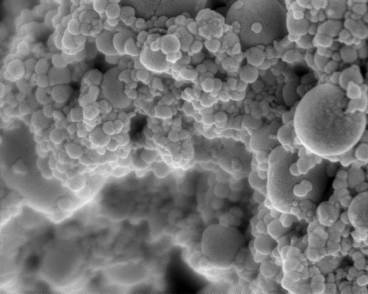
To help minimize these burdensome operations, a team of MIT chemical engineers has developed a new coating for implants that could help them better adhere to the patient's bone, preventing premature failure."
"The new coating consists of a very thin film, ranging from 100 nanometers to one micron, composed of layers of materials that help promote rapid bone growth. One of the materials, hydroxyapatite, is a natural component of bone, made of calcium and phosphate. This material attracts mesenchymal stem cells from the bone marrow and provides an interface for the formation of new bone. The other layer releases a growth factor that stimulates mesenchymal stem cells to transform into bone-producing cells called osteoblasts."
Source: Read the full article...
MIT News: http://web.mit.edu/newsoffice/2012/hip-implants-nanoscale-coating-0419.html
Image: Hammond Lab
|
|
Touch of Gold Improves Nanoparticle Fuel-Cell Reactions
|
From EurekAlert!, Brown Univeristy, March 12, 2012: "Advances in fuel-cell technology have been stymied by the inadequacy of metals studied as catalysts. Now chemists at Brown University have created a triple-headed metallic nanoparticle that they say outperforms and outlasts all others at the anode end in formic-acid fuel-cell reactions. In a paper published in the Journal of the American Chemical Society, the researchers report a 4-nanometer iron-platinum-gold nanoparticle (FePtAu), with a tetragonal crystal structure, generates higher current per unit of mass than any other nanoparticle catalyst tested. Moreover, the trimetallic nanoparticle at Brown performs nearly as well after 13 hours as it did at the start. By contrast, another nanoparticle assembly tested under identical conditions lost nearly 90 percent of its performance in just one-quarter of the time.
Source: Read the entire article...
EurekAlert.com: http://www.eurekalert.org/pub_releases/2012-03/bu-tog031212.php
|
|
Do You Have an Interesting Article to Share?
|
Interested in sharing the latest news in vacuum coating technology? Forward us a link to an article you want to share with the rest of the SVC readership to publications@svc.org. Purchase advertising space in this newsletter by contacting SVC at 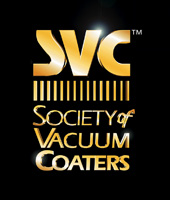 svcinfo@svc.org. svcinfo@svc.org.
Society of Vacuum Coaters
71 Pinon Hill Place NE
Albuquerque, New Mexico 87122
505-856-7188
|
|
|
|
|